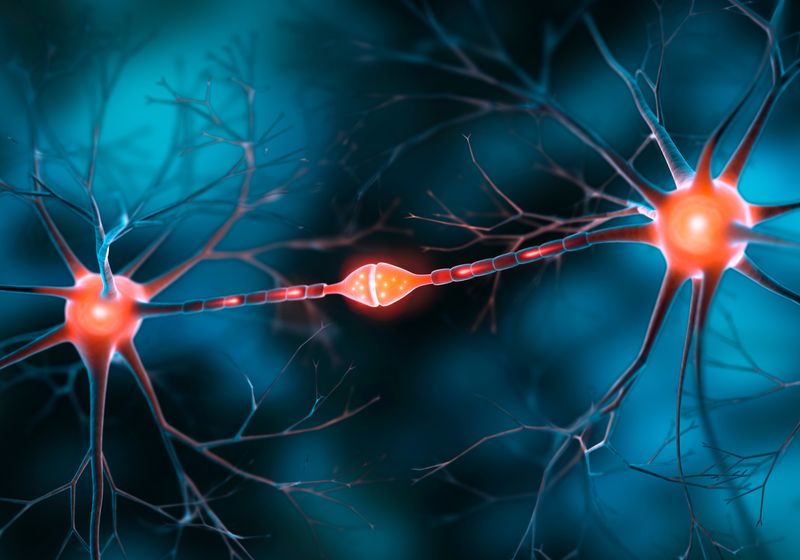Motor neurons, especially larger ones, must work harder to prevent misfolded proteins from accumulating.
Amyotrophic lateral sclerosis (ALS) is a progressive neurodegenerative disorder that selectively targets the motor neurons. The disease has no cure, and treatment options remain limited despite decades of research.1 One major issue is that scientists do not fully understand ALS’s exact pathogenic mechanisms, including why only motor neurons are affected, and why larger motor neurons degenerate first. A research team has turned to the humble zebrafish to try and answer that question. In a study published in Nature Communications, they found that large motor neurons must work harder to maintain protein homeostasis, making them more vulnerable to damage and degeneration.2
Motor neurons are some of the largest cells in the human body. In particular, upper neurons—extending from the cerebral cortex to the brain stem or spinal cord—average 60μm in diameter.3,4 These upper neurons also happen to be more susceptible to damage, whether from neurodegenerative disorders like ALS or just natural aging, than other cells, including smaller motor neurons despite serving the same function.2,4,5
Cell size might explain why this phenomenon exists. Cells rely on autophagy responses to remove misfolded or otherwise damaged proteins. The breakdown of these responses leads to protein aggregation inside the cell, which, if present in motor neurons, is a hallmark of ALS. Autophagy mechanisms can be impaired in many ways, including via genetic mutation—a primary focus of researchers studying ALS pathogenesis. However, cell metabolism can also affect autophagy, and individuals with ALS do tend to exhibit metabolic abnormalities.5
Kazuhide Asakawa, a neurobiologist at the National Institute of Genetics, and his colleagues wanted to look deeper into motor neuron energy regulation under both physiological and pathological conditions. To do this, they turned to zebrafish, whose translucent nature allowed the researchers to more easily measure autophagic activity throughout the spinal cord using single-cell confocal microscopy.
The team discovered that even in healthy animals, large motor neurons exhibited more autophagic activity than smaller ones and that there was an inverse relationship between the neurons’ cell body size and autophagic activity. They further found that the ubiquitin-proteasome system (UPS), another mechanism that cells use to degrade unwanted proteins, was also more active in larger motor neurons than smaller ones. Finally, they observed increased activation of unfolded protein response pathways, a sign of misfolded protein accumulation in the endoplasmic reticulum. This led the researchers to conclude that larger motor neurons inherently accumulate misfolded proteins at a greater rate than smaller neurons.
To simulate ALS, Asakawa and his team inactivated the genes encoding the trans-activation response element DNA-binding protein (TDP)-43, as TDP-43 mutations and the accumulation of this protein are present in most ALS cases.6 Without TDP-43 function, autophagic activity and UPS activation both accelerated, imposing even greater cellular degradation stress upon large motor neurons. “Our findings suggest that the substantial size and metabolic demand of large motor neurons impose a constant degradation burden,” said Asakawa in a statement. “This intrinsic pressure helps explain why these neurons are the first to degenerate in ALS and points to reducing degradation burden as a potential therapeutic strategy.”

